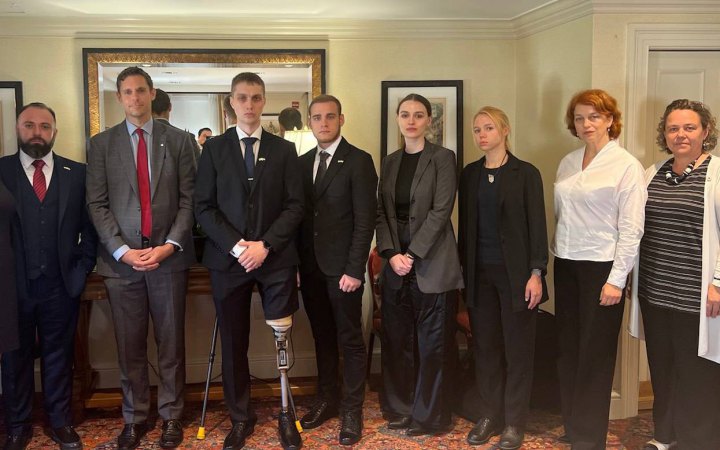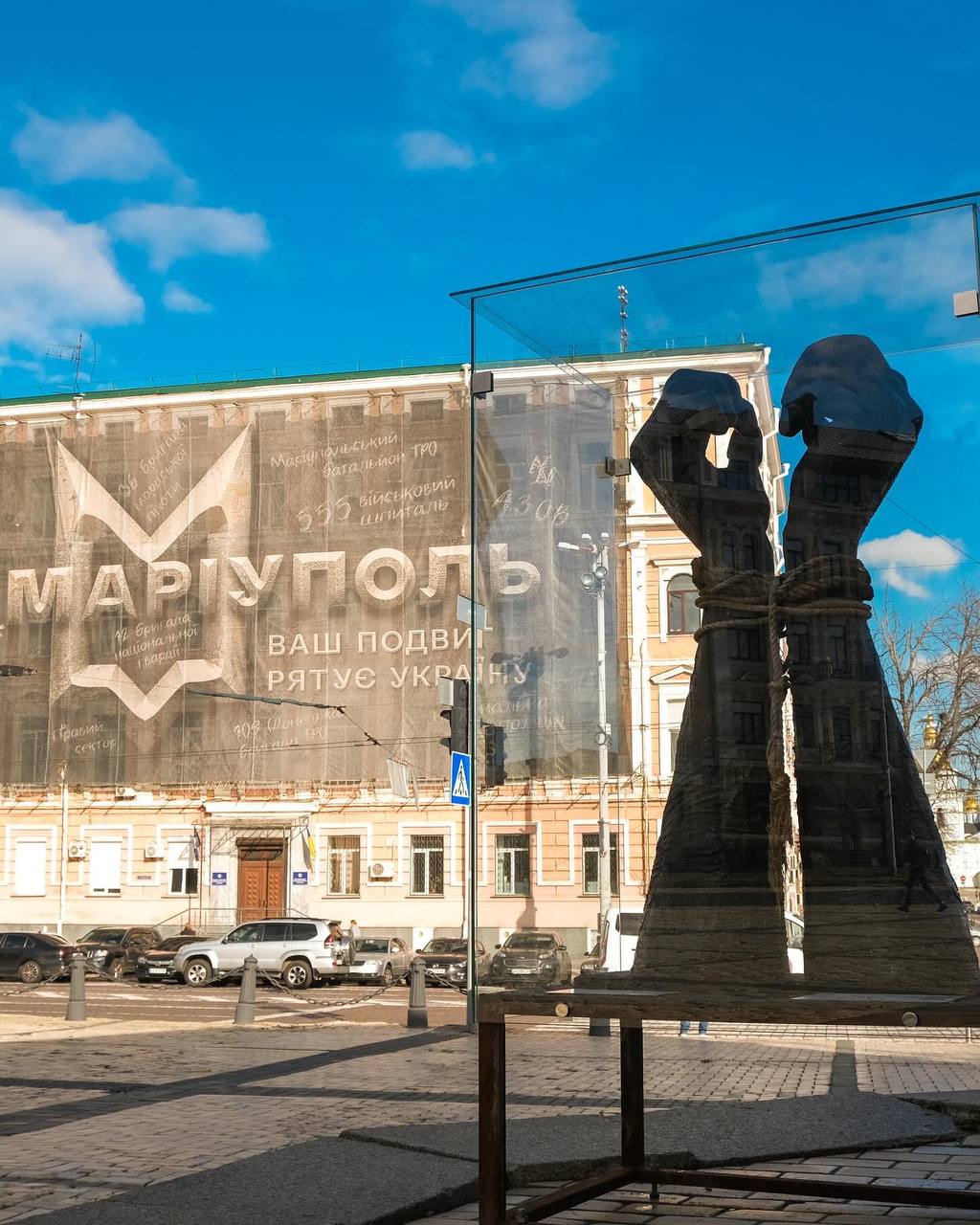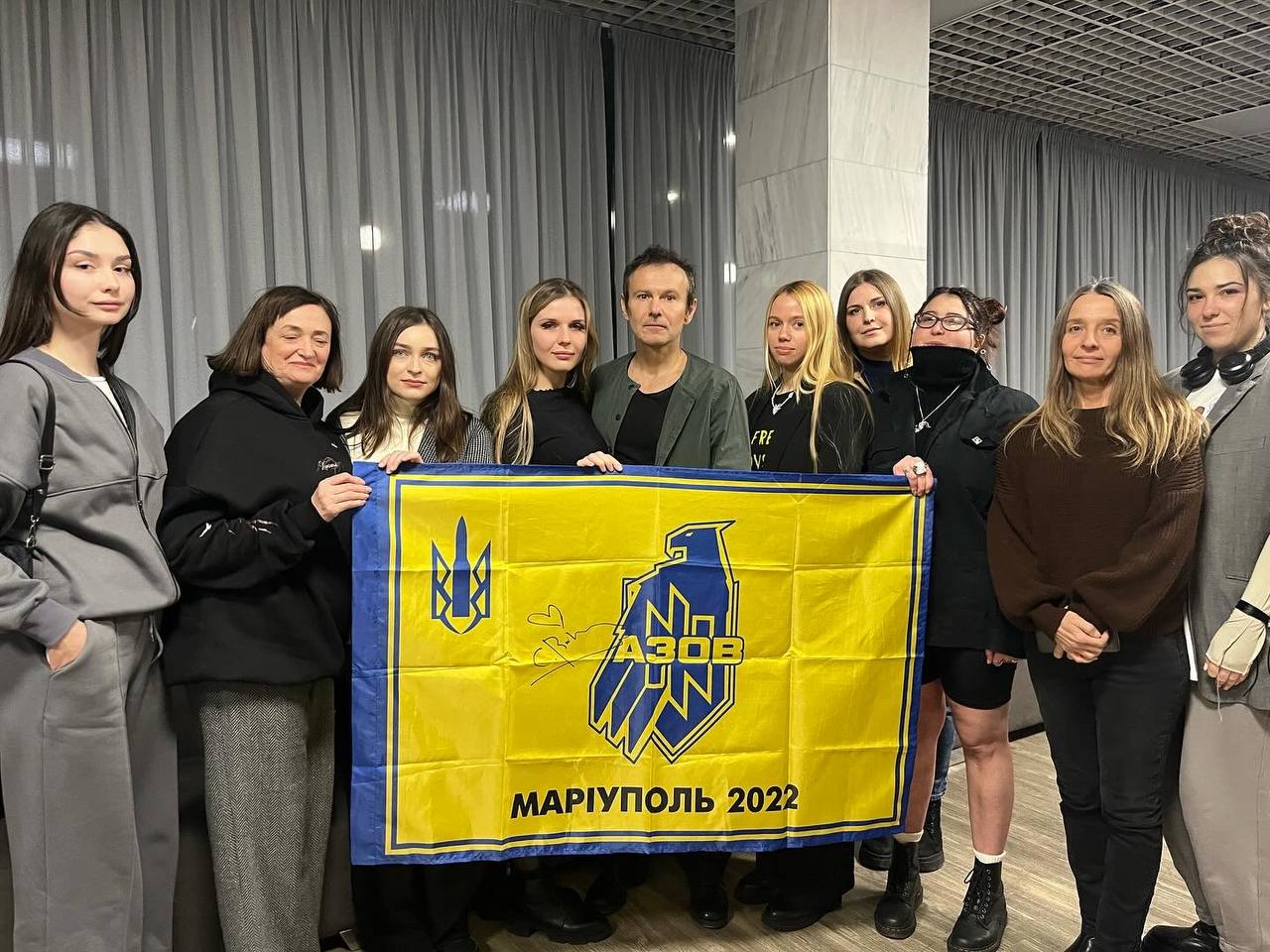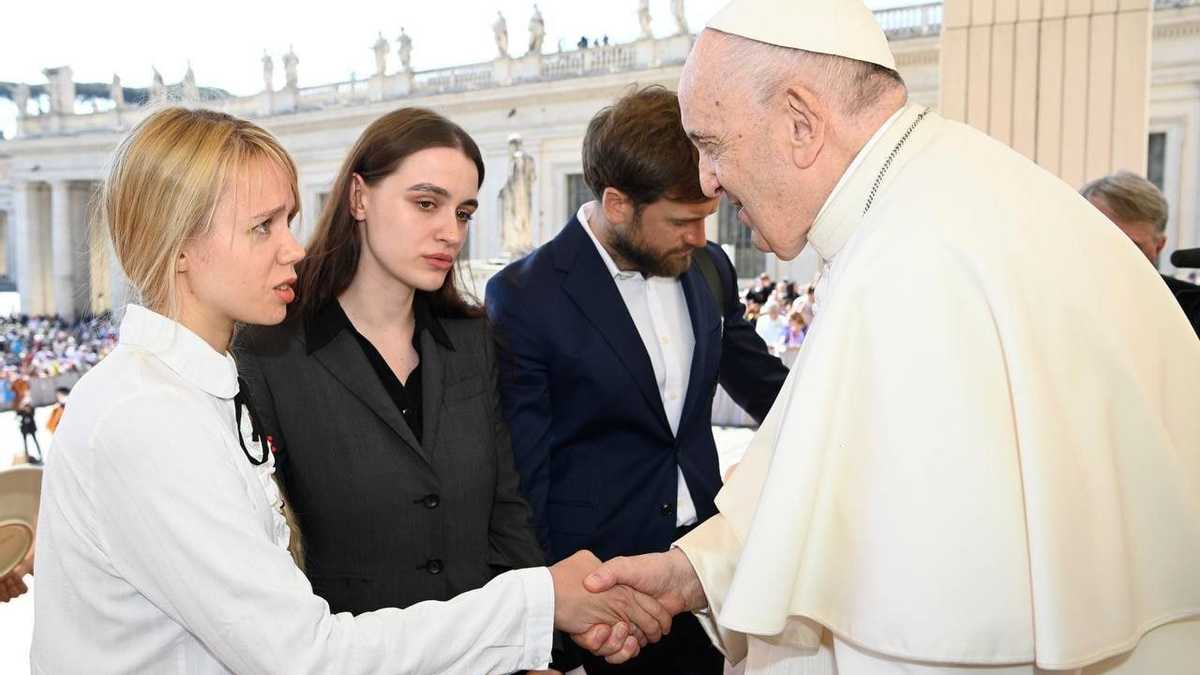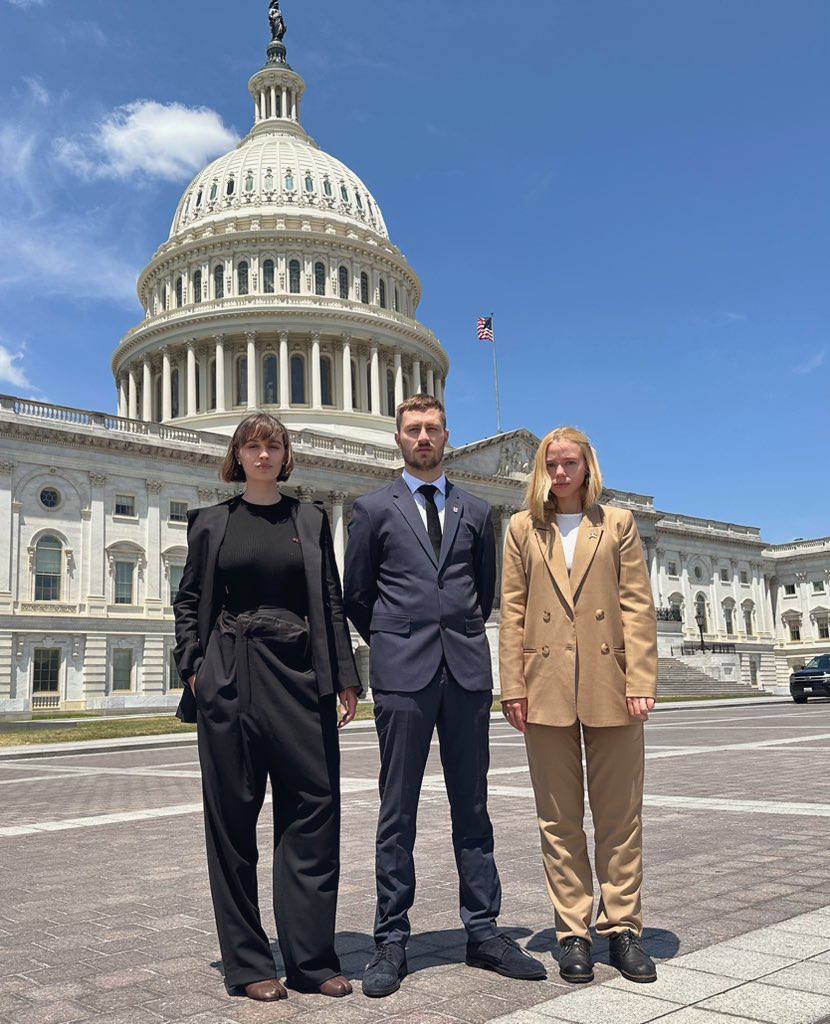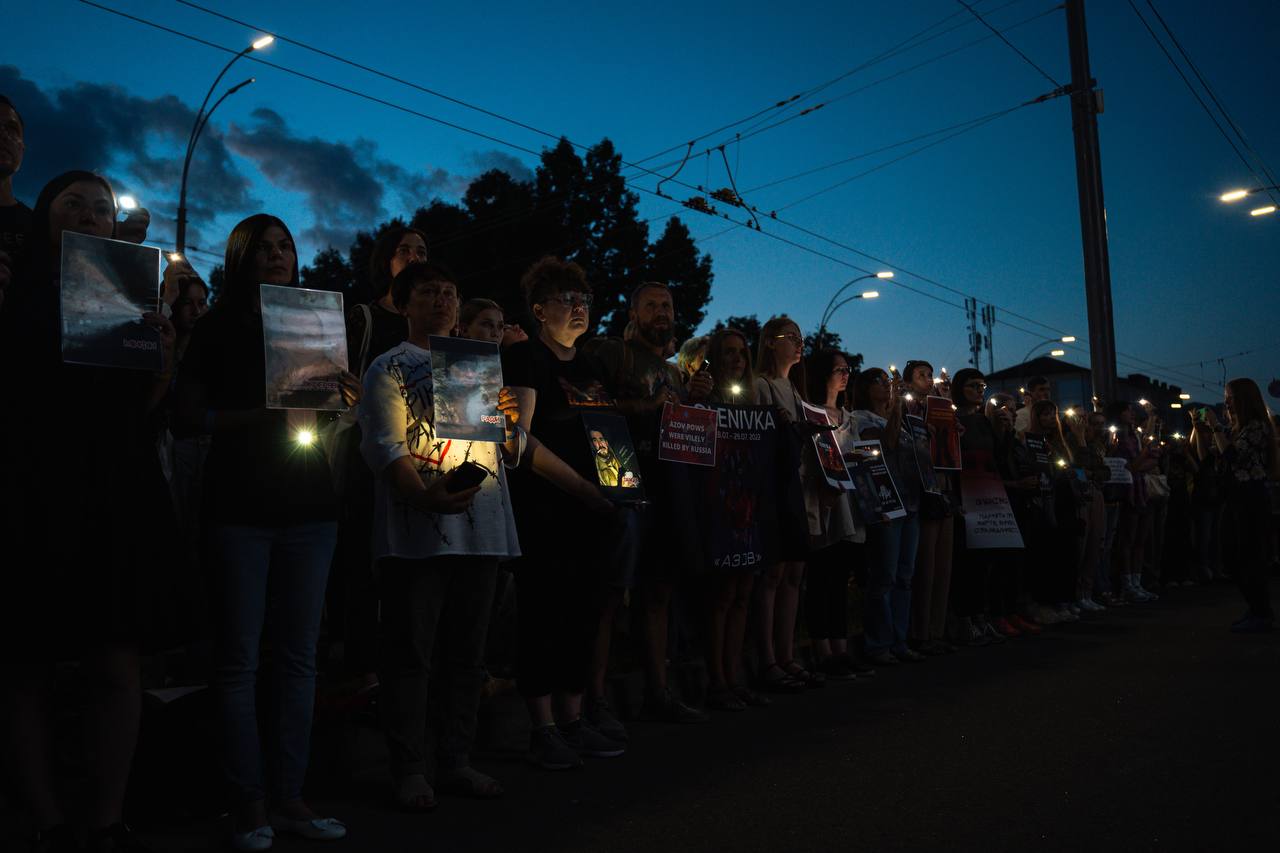Azovstal Defenders Families’ Association
“Mariupol garrison is doomed” — with such thoughts, many people, holding their breath, followed the events in the besieged city. However, instead of watching a military reality show, lamenting about the 300 Spartans, or composing epitaphs, there were those who couldn’t sit still. When it became evident that there would be no operation to lift the blockade of Mariupol, the wives of Azov fighters decided to try any methods to save the lives of their husbands. Thus, with the efforts of a few women, a large campaign to save the lives of the Mariupol garrison unfolds. This gave rise to the Azovstal Defenders Families’ Association.
First, there were religious leaders. On May 11, 2022, Kateryna Prokopenko, the wife of the Azov Regiment commander, and another fighter’s wife, Yuliia Fedosiuk, met with the Pope in Vatican City. According to Yuliia, the head of the Catholic Church showed great attention and compassion for the situation, and was open to the proposal to organize mediation and, under his own security guarantees, ensure a corridor for the evacuation of Mariupol defenders. The Pope was not against it. Unlike Putin.
Another idea was to involve political leaders in mediating the organization of an “extraction” procedure, similar to the Dunkirk operation in 1940.
At the same time, one of the most powerful tools for liberation remained publicity. Starting from the spring of 2022, the family members of Azovstal defenders began holding press conferences, giving comments, and interviews. Not only did the wider public learn about the heroism of Mariupol defenders, but the unit itself finally appeared in a different light. The womens’ achievements include dozens of official visits abroad and establishing cooperation with international organizations, foreign governments for the liberation of prisoners of war, and the possibility of international organizations’ access to monitor their captivity. The Association also carries out charitable activities to support the families of the defenders.
In December 2022, the representative of the Association, Yuliia Fedosyuk, together with the former Azov officer and war prisoner Ilya Samoylenko, made an official visit to Israel with the support of the Embassy of Ukraine in Israel and the “Nadav” Foundation. During this visit, they held a series of public events, press conferences, and meetings, including with reserves of the IDF.
In the summer of 2023, a large campaign was carried out regarding prisoners of war in the United States. It included several meetings with congressmen, a meeting at Stanford University with Francis Fukuyama, and more.
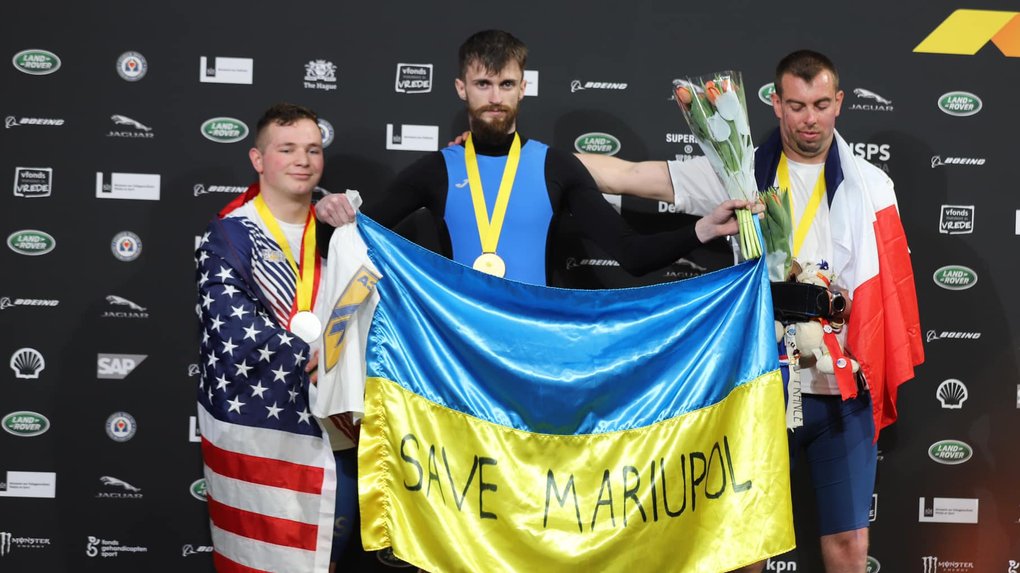
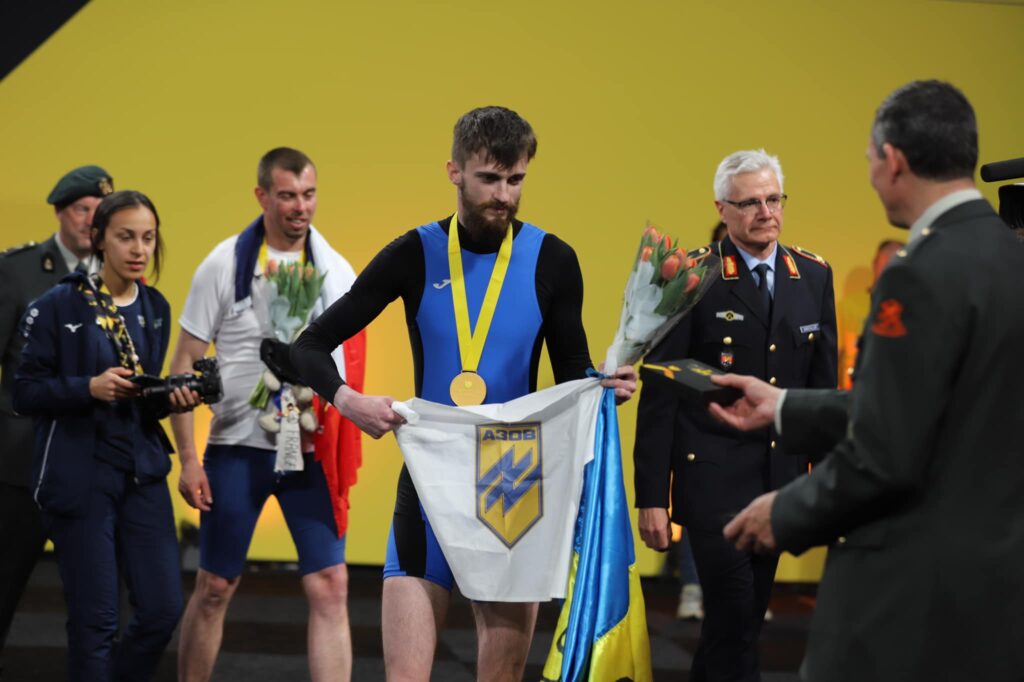
Azov veteran Igor Halushka, who took “gold” at the Invictus Games in rowing on ergometers in 2022, came out to the award ceremony with the flag of Ukraine with the slogan “Save Mariupol” and the emblem of Azov regiment.
Captivity, blockade, and a new beginning
“We never thought about captivity. We had already mentally buried ourselves and were waiting for the food and ammunition to run out, and when we would have to go to the Russians with bare hands. No one even thought about the prospect of captivity. It was something unknown and terrifying. In fact, we were not wrong.”
At first, the Russians promised to adhere to agreements on the prospects of further exchange, involving the guarantees of the Red Cross. The exit from Azovstal became the only moment when the military saw international organizations. However, soon the Russians once again violated the agreements, and the “evacuation” turned into full-fledged “captivity.” Among the entire Mariupol garrison, the Azov soldiers were the ones feared and hated the most.
“They were very afraid of us, Azov soldiers were not taken out of the cell without the protection of special forces.”
The heavily wounded soldiers from Azovstal were sent to hospitals in Novoazovsk and Donetsk, both under no Ukrainian control. The rest of the prisoners of war were taken to Olenivka colony. The Russian side guaranteed the proper detention of the military personnel until the beginning of the exchanges. However, Olenivka is a facility specifically reactivated in the spring of 2022, where the conditions are not suitable for detention. According to those who have been lucky enough to be released from captivity, the inmates are systematically subjected to torture, not provided with sufficient food and drinking water, and lack basic hygiene items. Moreover, prisoners sleep on the concrete floor, and in many cases, there is no semblance of a mattress. Among the prisoners of war from the Mariupol garrison, there was also a pregnant woman, military medic Mariana Mamonova — she was exchanged only before giving birth, at the ninth month of pregnancy. Before that, she had been in the colony without any proper conditions.
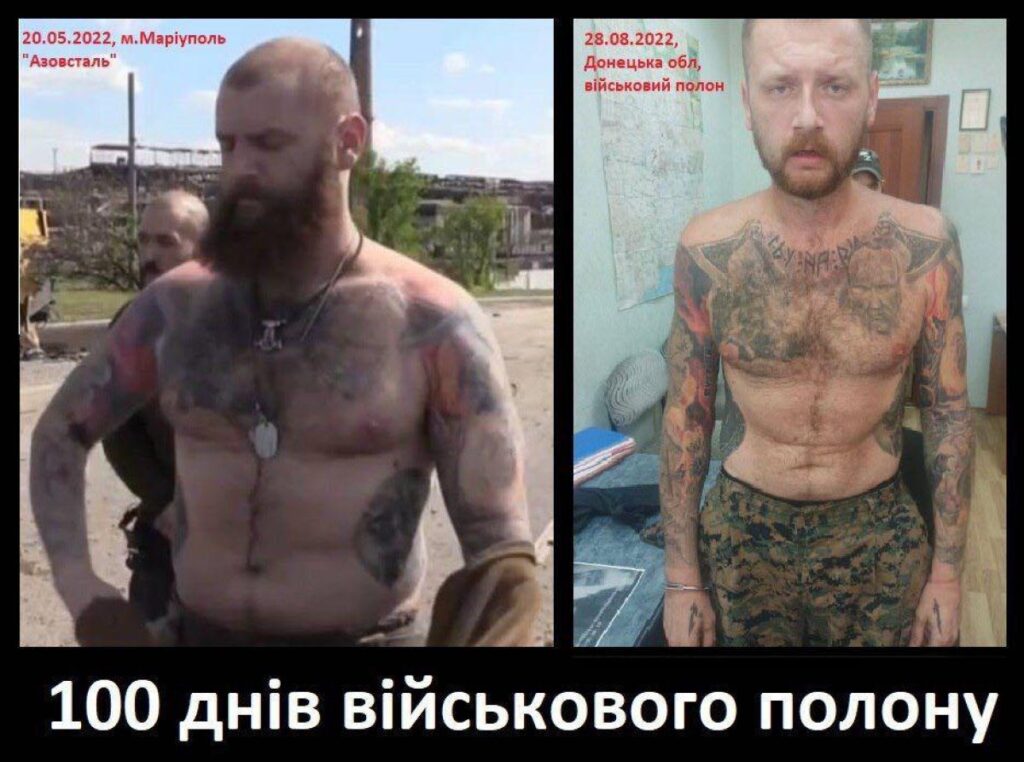
Terrorist attack in Olenivka
A day before the event dubbed the Olenivka tragedy, part of the prisoners of war were transferred to a barracks located nearby. On the night from July 28 to July 29, 2022, Russian supervisors gave the signal to evacuate and left the territory of the colony, which happened practically for the first time. Around midnight, an explosion occurred in this barracks, followed by screams. A few hours later, medics from other barracks were allowed to provide first aid to the wounded. It is likely that more prisoners could have been saved if there were medical supplies and minimal equipment. As a result of the deliberate use of thermobaric weapons against unarmed individuals, 57 prisoners of war died, and around 130 were injured. Russia did not allow Ukrainian or international human rights activists and experts to access the site of the terrorist attack. Perhaps due to the global publicity of the tragedy, this prison ceased to be used in winter 2023, with the prisoners being moved to other detention facilities.
Meanwhile, in January 2023, the UN Secretary-General decided to disband the mission to establish the facts about the terrorist attack on July 29, 2022, in Olenivka “due to the absence of conditions necessary for the deployment of the mission on-site.” Advisor to the head of the Office of the President, Mykhailo Podolyak, stated that Ukraine would raise the issue of disbanding the International Committee of the Red Cross and creating an alternative structure if it fails to fulfill its duties. The international community remains silent on the Olenivka tragedy.
Russian prisons
“During our transfer to Taganrog, a harsh ‘reception’ took place, which I cannot talk about now. All I can say is that after it, I lost the ability to walk for 6 weeks,” said a fighter with the call sign “Yas.”
There is no comprehensive information publicly available about all the places of detention where the Azov prisoners of war are held. Some soldiers were sent to Taganrog, where they were interrogated by investigators from the Investigative Committee of the Russian Federation. Most Azov members spent the majority of their time in detention there, accompanied by systematic torture. According to “Yas’s” recollections, after one of these beatings, he could only move on crutches, but they were taken away in prison, and during routine checks, he could only crawl out of the cell, receiving even more blows. Azov members are subjected to staged trials on charges of crimes against humanity and shelling in Mariupol. Some fighters are known to be in Rostov-on-Don and Donetsk.
On September 21, 2022, the commanders of the Azov Regiment, Denys Prokopenko, Svyatoslav Palamar, and Oleg Khomenko, were released from captivity, and according to the agreement with Turkey, they were supposed to stay in the country until the end of combat actions. However, on July 9, 2023, they were returned to Ukraine. Several exchanges allowed about 200 members of the unit to return overall.
In captivity, about 700 members of the Azov Brigade still remain. It’s most challenging to exchange them after years of Russian demonization…
In April 2022, Azov servicemen who were outside Mariupol during the full-scale invasion, along with Azov veterans and volunteers responding to the call to unblock Mariupol, formed a new battalion called OZSP Azov. However, the Mariupol unblocking operation never took place due to the lack of operational capability, as the enemy’s breakthrough depth was over 100 km, and Russians had full control of the skies. Therefore, the newly-formed Azov volunteers started engaging in combat in the Zaporizhzhia direction. They were joined by Azov servicemen from the Mariupol garrison, who were released from captivity and evacuated wounded from the city. They began restoring Azov’s combat readiness, with a focus, as always, on thorough soldier training.
From July 2022 to February 2023, the new Azov unit underwent “baptism by fire” in the Zaporizhzhia direction near Velyka Novosilka. Azov soldiers also took the lead in the counteroffensive in May 2023 near Orikhiv, along the trajectory of a possible advance towards Mariupol.
Almost nine years after the start of its journey, on February 9, 2023, Azov was expanded to a brigade. The press service published a video about the unit’s challenging history.
On August 17, 2023, the restoration of the unit’s combat capability was announced. Since then, the reinvigorated Azov has started carrying out combat missions near Kreminna, in the Serebriansky forest.
The Azov infantry holds Ukrainian positions, storms enemy fortifications, and captures Russian occupiers. The Azov aerial reconnaissance, in particular, distinguished itself by destroying enemy equipment, such as Murom video-thermal observation complexes, communication systems, enemy engineering equipment, etc., and directing artillery fire at enemy targets. And so much more.
Three dots
“I am deeply convinced that the army is a team effort. And from today, together with you, we will continue the fight. We will definitely have our say in battle,” declared the usually reserved “Redis” after returning to Ukraine from Turkey in July 2023.
In a few weeks, Hero of Ukraine Denys Prokopenko returned to duty.
Azov is back on the frontline, and judging by the testimonies of the Azov fighters themselves, there are no sighs and complaints about a difficult fate. There’s still a lot of work to do: replenishing the exchange fund to bring back the rest of the captured brothers-in-arms, liberating territory, destroying the enemy and their equipment, and training young fighters. In the end, when the legendary commander leads the battle, it’s like another military adventure, with a good chance to earn military glory and, at the same time, drive yet another enemy away from their land.
